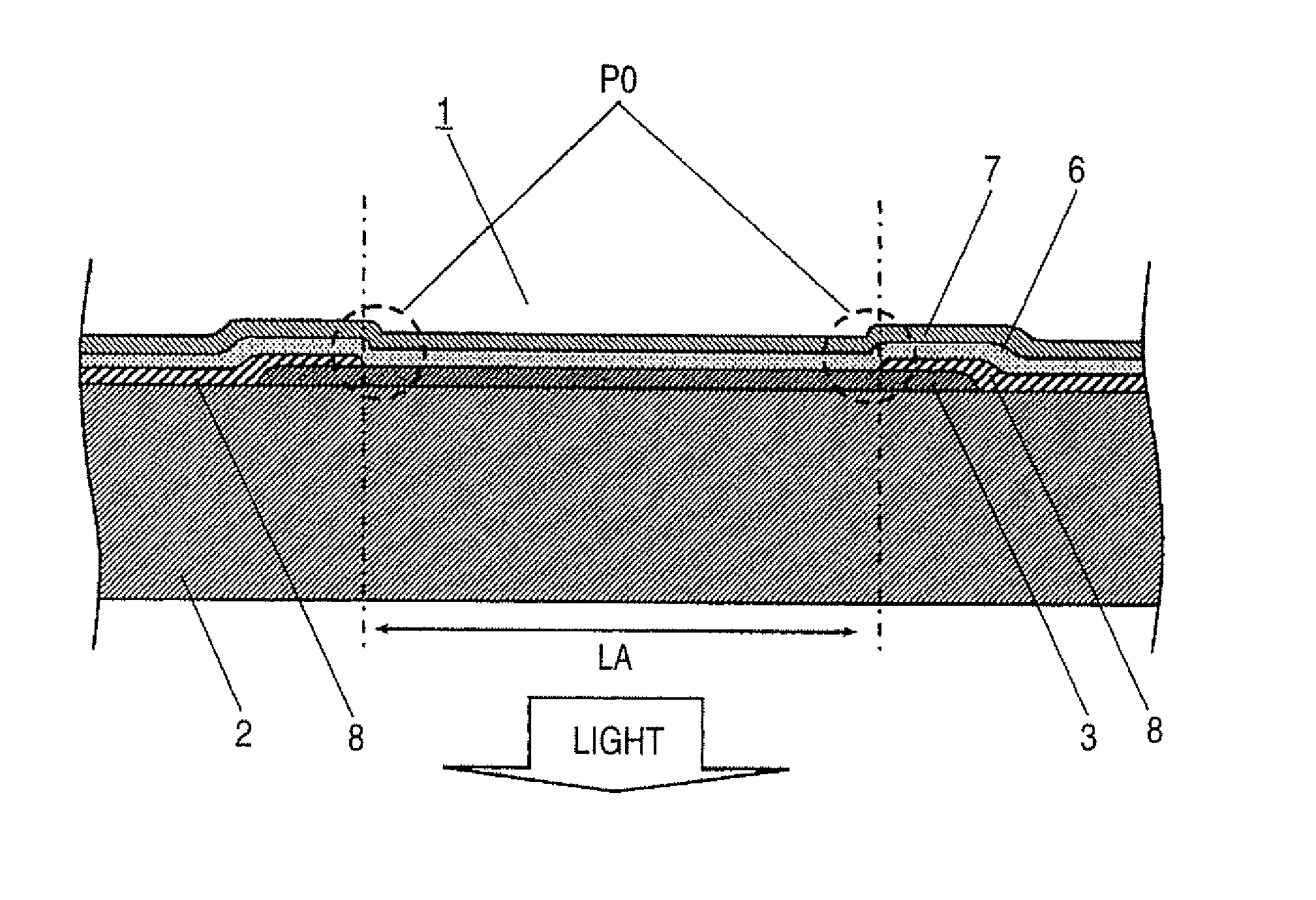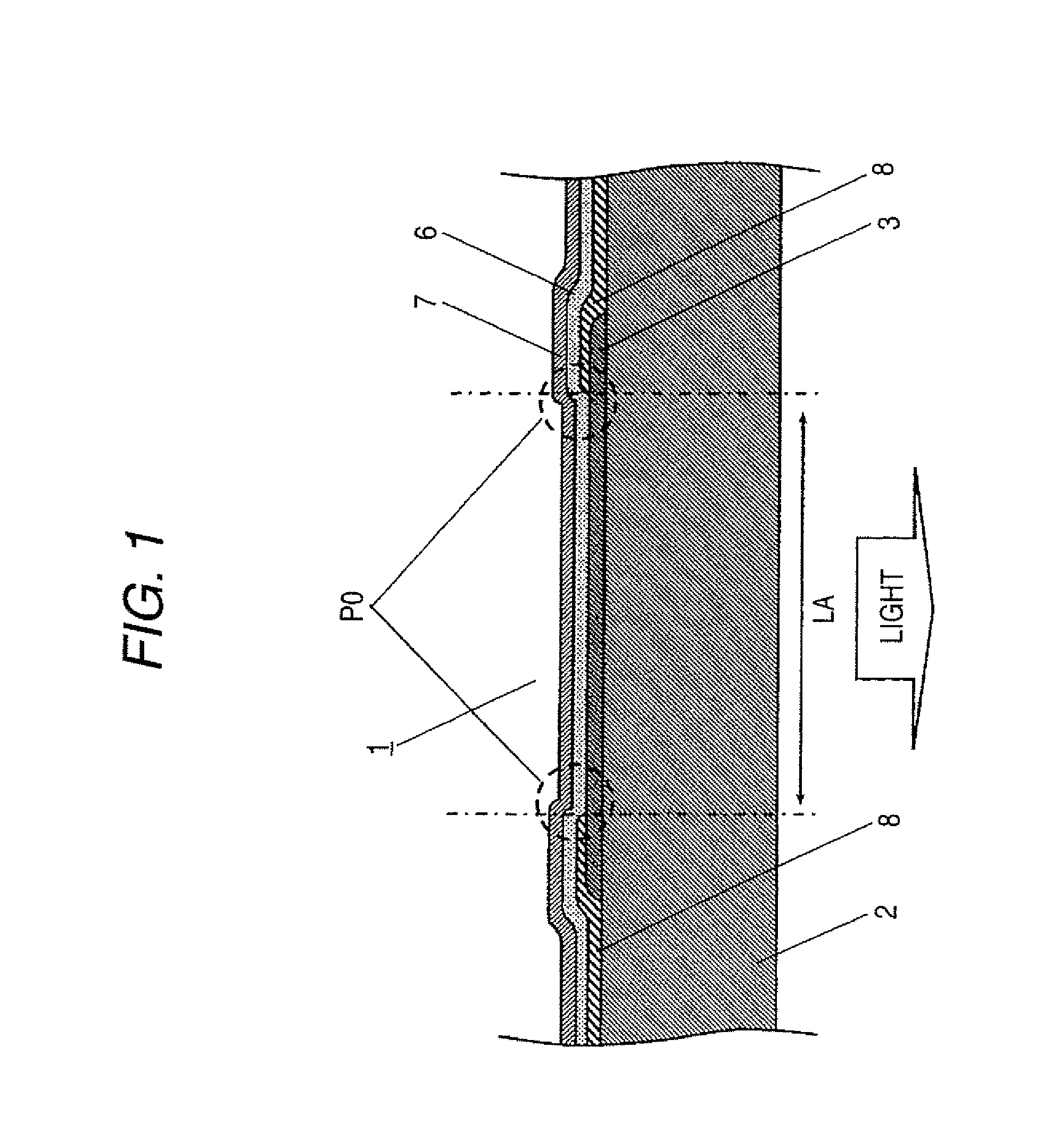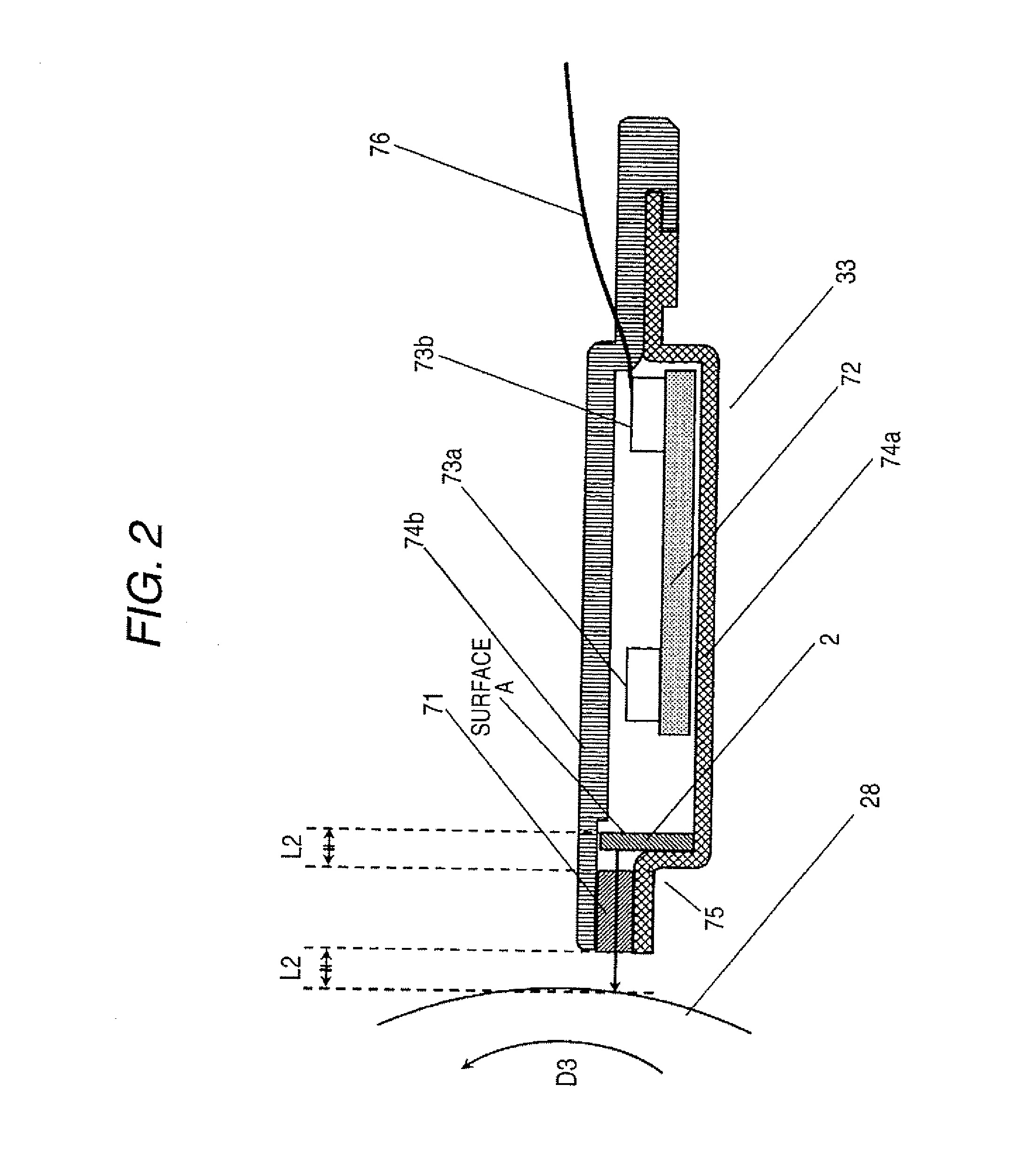Organic electroluminescence element, exposure device and image forming
- Summary
- Abstract
- Description
- Claims
- Application Information
AI Technical Summary
Benefits of technology
Problems solved by technology
Method used
Image
Examples
embodiment 1
[0077] Hereinafter, an embodiment 1 of the present invention is explained in conjunction with drawings.
[0078]FIG. 1 is an explanatory view which shows the structure of an organic electroluminescence element 1 according to the embodiment 1 of the present invention. Hereinafter, the structure of the organic electroluminescence element 1 according to the embodiment 1 is explained in detail in conjunction with FIG. 1.
[0079] In FIG. 1, numeral 1 indicates an organic electroluminescence element according to the present invention. For the sake of brevity, for example, a drive circuit which drives an anode is omitted from FIG. 1. The circuit constitutions or the like for driving the organic electroluminescence element 1 are explained in detail later.
[0080] Numeral 2 indicates a colorless and transparent glass substrate. As the glass substrate 2, for example, it is possible to use inorganic oxide glass such as transparent or semitransparent soda ash glass, barium strontium-containing glas...
embodiment 2
[0196]FIG. 8 is a cross-sectional view which shows the structure of the organic electroluminescence element 1 according to the embodiment 2 of the present invention. Hereinafter, although the structure of the organic electroluminescence element 1 according to the embodiment 2 is explained in detail in conjunction with FIG. 8, with respect to an exposure device which adopts the organic electroluminescence element 1 and an image forming apparatus which mounts the exposure device thereon, since there is no difference in the constitution and the operation between the embodiment 1 and the embodiment 2, the explanation thereof is omitted.
[0197] In the embodiment 2, the pixel restricting portion 8 has at least a thickness of end portion PO thereof set to a value equal to or more than 50 nm and equal to or less than 100 nm as explained in the embodiment 1 and, at the same time, a thickness of a region of the pixel restricting portion 8 other than the end portion PO of the pixel restricting...
embodiment 3
[0214]FIG. 10 is a cross-sectional view showing the structure of an organic electroluminescence element 1 in the embodiment 3. Hereinafter, the structure of the organic electroluminescence element 1 in the embodiment 3 is explained in detail in conjunction with FIG. 10. However, with respect to the exposure device to which the organic electroluminescence element 1 is applied and the image forming device on which the exposure device is mounted, the constitution and the action thereof have no difference between the embodiment 1 and the embodiment 3 and their explanations are omitted.
[0215] An organic electroluminescence element 1 according to the embodiment 3 includes an anode 3 to which holes are injected, a light emitting layer 6, a cathode 7 to which electrons are injected, and a pixel restricting portion which has a plurality of layers which restricts a light emitting region of the light emitting layer 6 by controlling the injection of at least one of the holes and the electrons,...
PUM
 Login to View More
Login to View More Abstract
Description
Claims
Application Information
 Login to View More
Login to View More - R&D
- Intellectual Property
- Life Sciences
- Materials
- Tech Scout
- Unparalleled Data Quality
- Higher Quality Content
- 60% Fewer Hallucinations
Browse by: Latest US Patents, China's latest patents, Technical Efficacy Thesaurus, Application Domain, Technology Topic, Popular Technical Reports.
© 2025 PatSnap. All rights reserved.Legal|Privacy policy|Modern Slavery Act Transparency Statement|Sitemap|About US| Contact US: help@patsnap.com



